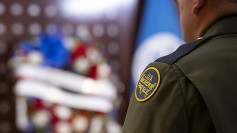When COVID-19 rates in New York City soared in December due to the new Omicron variant, humans were not the only species affected.
According to a study led by Penn State University scientists, the highly infectious variant also infected the white-tailed deer population on Staten Island, the most suburban of the city's five boroughs.
The capability of coronavirus to infect animals is not new. The virus most likely began in an animal species before spreading to humans, a process known as spillover. There have been documented examples of many animals contracting the virus, with varying degrees of disease, since the pandemic began.
After earlier variants were discovered in white-tailed deer in New York and numerous other states, it was already known that deer can catch COVID-19. However, Suresh Kuchipudi, a professor of virology at Penn State who led the research team, said Tuesday that the Staten Island study is the first to detect evidence of the Omicron variant in deer or any wild animal population.
"This sort of opened up the possibility that, like the previous variants, omicron can and has spilled over into animals," Kuchipudi said. "So therefore we need to continue to monitor."
According to the study, the Omicron variant was found in nasal swabs from seven of 68 Staten Island deer tested between Dec. 13 and Jan. 31. It was supported by the USDA's National Institute of Food and Agriculture.
Although Omicron has been discovered to cause lesser COVID-19 symptoms in humans than prior versions of the virus, scientists are concerned that new variants will evolve that would make individuals sicker.
According to Kuchipudi, the spread of Omicron from people to deer raises concerns that novel and perhaps vaccine-resistant mutations could arise undetected in non-human hosts.
He also mentioned that one of the infected deer in the study had COVID-19 antibodies from a previous infection, implying that deer, like humans, can have breakthrough cases.
Because of the significance of the findings, the Staten Island deer study has been published as a pre-print instead of being submitted to a peer-reviewed journal, according to Kuchipudi.
New York City officials say although humans go to Staten Island by boat or bridge, deer first arrived by swimming from New Jersey. Motorists and gardeners in the municipality have long complained about the animals.
The virus's spread among wildlife is a black box that scientists are attempting to peep into with the tiniest of pinpricks. They do know, however, that when the coronavirus establishes itself in wildlife, it develops a type of insurance policy for itself. We may be able to contain the pandemic among humans, but the virus is likely to spread to other animals, making it even more difficult to monitor and destroy.






